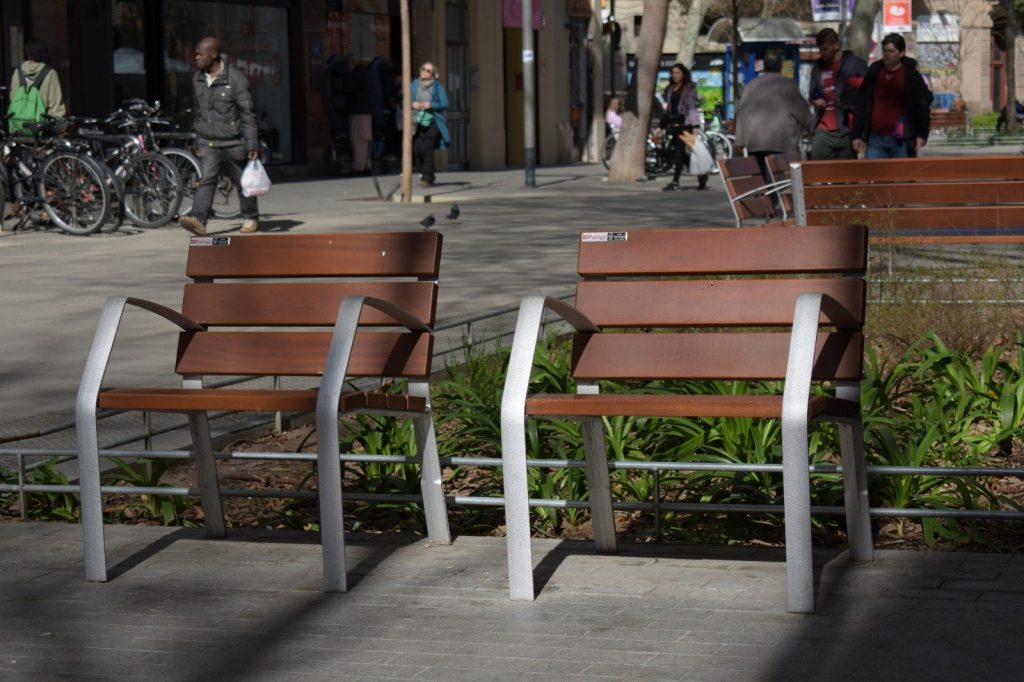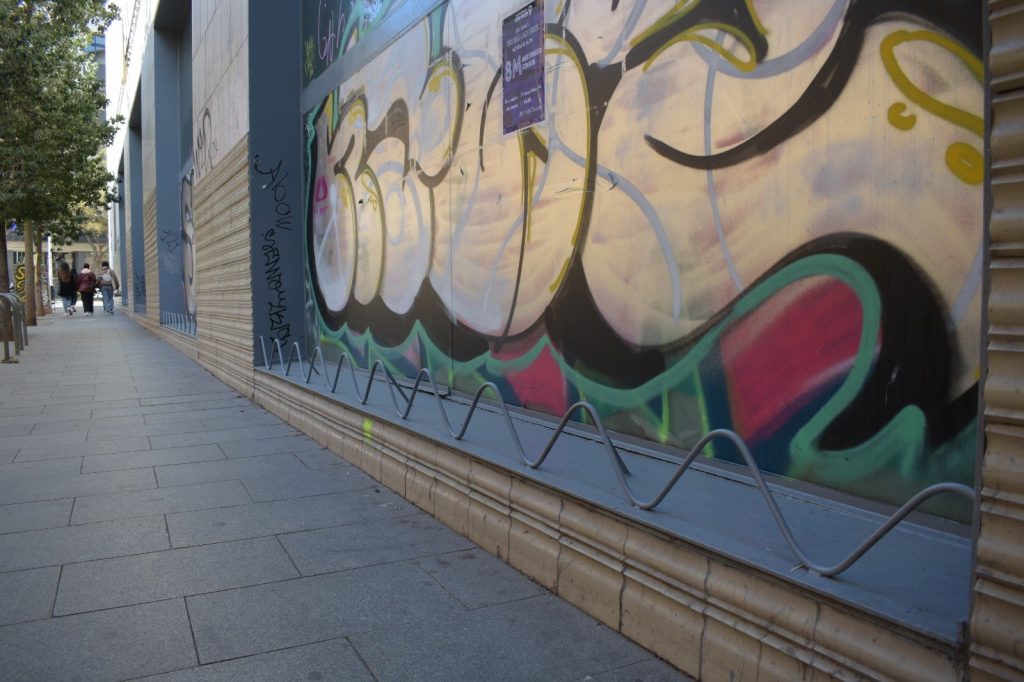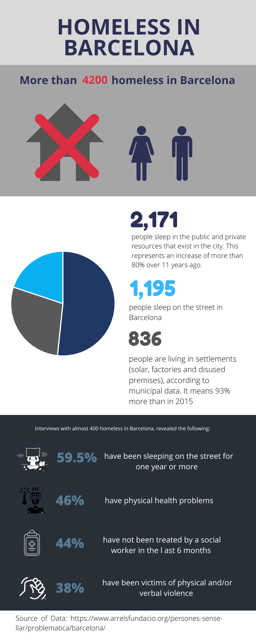The objective of hostile urbanism is to expel those who make an “uncivic” use of public space. This initiative is pushed forward by private agents and public policies, among other aspirations, both share the objective of making housing more expensive in certain districts.

Personal or double benches, but with a railing in the middle, metal under the covered spaces or spikes on surfaces covered by a roof; these are some of the elements that at first glance have no specific function, however, behind these designs are major economic forces. This urban style is found in neighborhoods that are in the process of gentrifying or in those that are already enriched.
Symbolic Violence
Núria Benach is a teacher at the Universitat de Barcelona (UB), she specialized in geography and urban planning from a social perspective. Benach assures that in this system “there is no alternative for the homeless”. “What private agents and public policies are trying to do is move them to the periphery”, she says.
“When the public space is conditioned by private agents, it ceases to be purely public”, explains the geographer. On the other hand, “when they take away someone’s right to stay in a place that is not only public, it is also a place they need to survive, they are condemning them”.
Thus, symbolic violence appears when it is exercised from power, with an economic interest and it is justifying that this urban rehabilitation is potentially positive for citizens, but not for everyone. Benach gives to understands that “the homeless are not a problem for economic power” and in “a society where the feeling of community disappears, people look the other way”.
Perspective of a lesee
Joan Fontanet is a geographer, he worked in several studies to determine the environmental impact of urban plans. Also, Fontanet rents out three apartments in El Raval, Barcelona.
He is certain that Urban planning should go hand in hand with social measures. He says that “if there is something that we don’t like, we can’t think that the problems will disappear only by keeping away these people from public spaces.The problem doesn’t disappear. It’s only moving them from one place to other places of the city”. Also, Pérez points out: ” Different economic classes should share the same space without problems”. “However, all of this, now, it seems to be an utopia”, he adds.
The lesee explains that in the “process of gentrification, no focus is put on the homeless”. According to Pérez this is due to “narco-flats and mafias”. “That is the real problem and not those who sleep where they can”, he adds. He concludes explaining that “the city council must work to alleviate this social problem”, as well as “to end this aggressive hostile urbanism”.
A Civil Society
Arrels Fundació works to sensitize citizens, report unfair situations and provide solutions to administrations and civil society to make this possible.
As for the hostile urban architecture, which they understand as “an infringement of the rights of citizens”, the organitzation explains that in the homeless, it causes: “A more complicated day to day, greater stress and anxiety, a feeling of rejection and greater criminalization, on the part of the localization teams a greater difficulty of localization”.

The following quote sums up perfectly, what the organization aspires to achieve: “What we would like is for homeless people to be able to use public space like any other citizen and that, as a society, we care so that all people have a house to sleep at night. We are convinced that achieving #nadiedurmiendoenlacalle (#noonesleepingonthestreet) is possible, but this requires social care and housing policies aimed at people living on the street and prevention policies so that no one loses their home. ”
From Arrels Fundació they created an interactive online map in which one can add locations where elements of hostile urbanism are found.
Data to take into account
The city council of Barcelona is promoting a 2016-2020 Anti-Homelessness Plan, that has been created on municipal level. The goal of the plan is to develop and detail policies that address the homelessness problems in Barcelona. However, at the current moment, the rate of homeless people in Barcelona remains too high, and the process of gentrification makes the life’s of multiple affected even more difficult.

